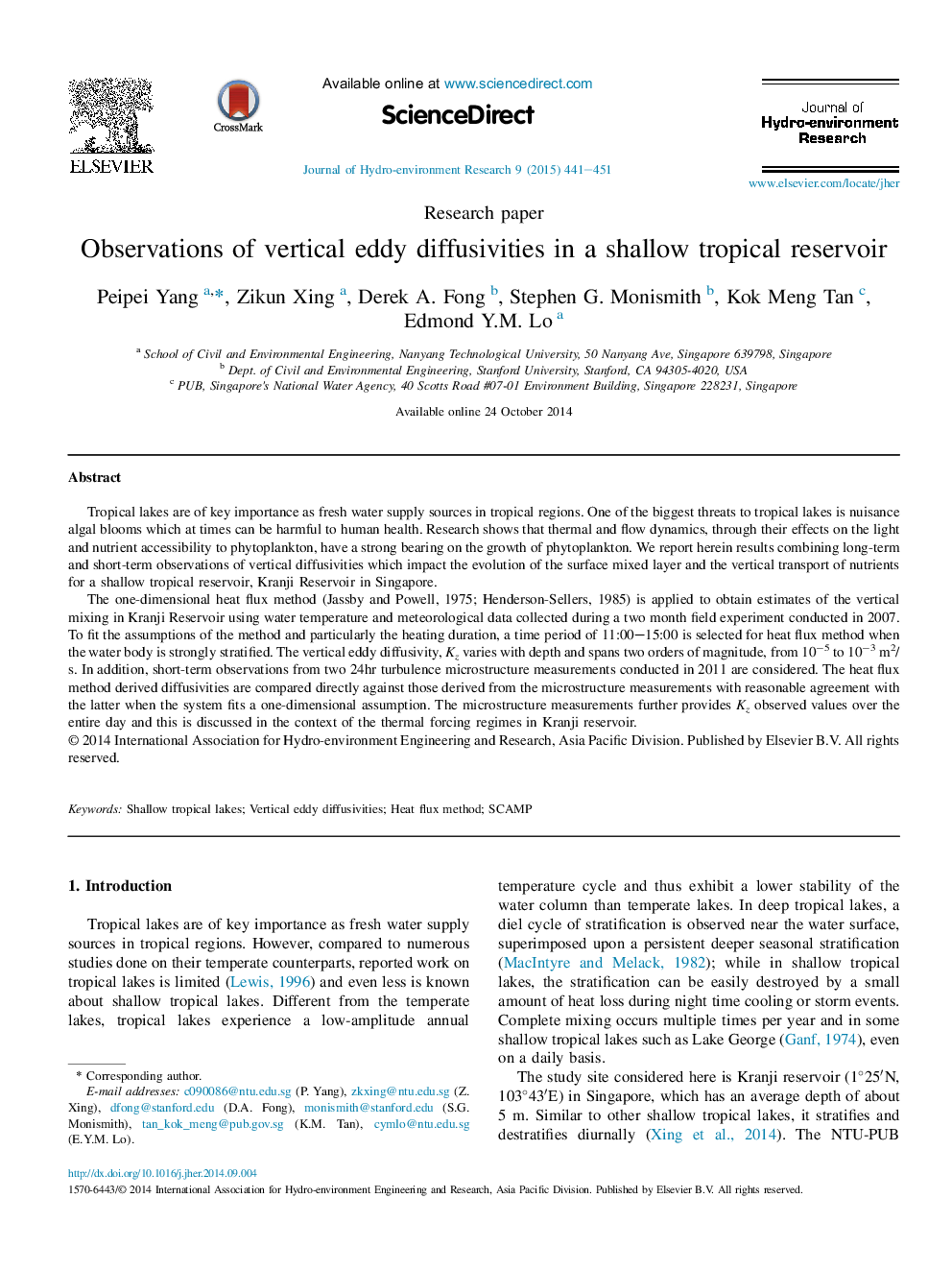| Article ID | Journal | Published Year | Pages | File Type |
|---|---|---|---|---|
| 4493646 | Journal of Hydro-environment Research | 2015 | 11 Pages |
•Long term vertical temperature measurements were used with the heat flux method to derive vertical diffusivities Kz.•Vertical mixing were shown to varied spatially in Kranji reservoir, a shallow tropical reservoir during heating periods.•Kz from two 24hr SCAMP measurements exhibited different structures during two different reservoir thermal response regimes.•SCAMP measurements also highlighted the strong temporal variability inherent in shallow tropical lakes.•Kz by the heat flux method during 11:00–15:00 were in reasonable agreement with SCAMP measurements on the heating periods.
Tropical lakes are of key importance as fresh water supply sources in tropical regions. One of the biggest threats to tropical lakes is nuisance algal blooms which at times can be harmful to human health. Research shows that thermal and flow dynamics, through their effects on the light and nutrient accessibility to phytoplankton, have a strong bearing on the growth of phytoplankton. We report herein results combining long-term and short-term observations of vertical diffusivities which impact the evolution of the surface mixed layer and the vertical transport of nutrients for a shallow tropical reservoir, Kranji Reservoir in Singapore.The one-dimensional heat flux method (Jassby and Powell, 1975; Henderson-Sellers, 1985) is applied to obtain estimates of the vertical mixing in Kranji Reservoir using water temperature and meteorological data collected during a two month field experiment conducted in 2007. To fit the assumptions of the method and particularly the heating duration, a time period of 11:00–15:00 is selected for heat flux method when the water body is strongly stratified. The vertical eddy diffusivity, Kz varies with depth and spans two orders of magnitude, from 10−5 to 10−3 m2/s. In addition, short-term observations from two 24hr turbulence microstructure measurements conducted in 2011 are considered. The heat flux method derived diffusivities are compared directly against those derived from the microstructure measurements with reasonable agreement with the latter when the system fits a one-dimensional assumption. The microstructure measurements further provides Kz observed values over the entire day and this is discussed in the context of the thermal forcing regimes in Kranji reservoir.
